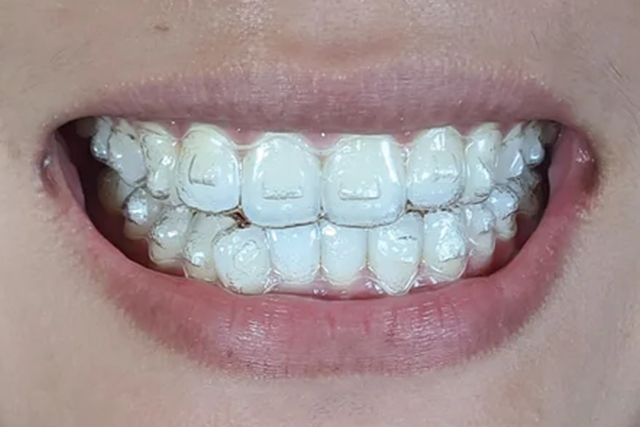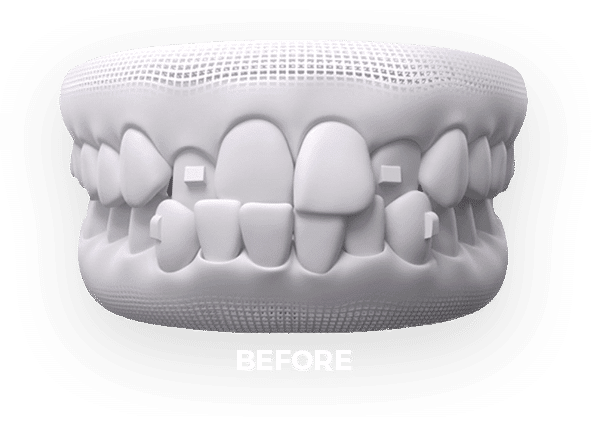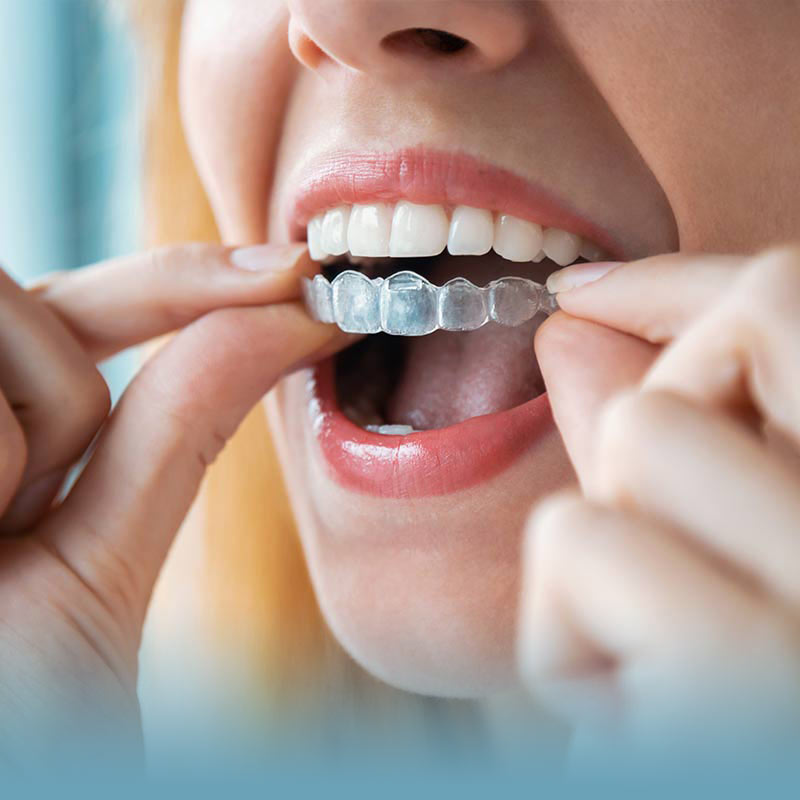Maintaining Oral Health While Using Invisalign: Tips for a Smooth Experience
Maintaining Oral Health While Using Invisalign: Tips for a Smooth Experience
Blog Article
Invisalign vs. Traditional Braces: Which Alternative Is Right for You?
When thinking about orthodontic treatment, the choice between Invisalign and typical dental braces presents numerous important elements that merit cautious analysis. Invisalign offers a discreet option with detachable aligners, while standard dental braces provide a more visible yet efficient option for extreme imbalance.
Review of Treatment Choices

In contrast, conventional braces include metal braces and cords that are bonded to the teeth. This technique applies continual pressure with time to accomplish placement. While efficient for complicated orthodontic concerns, conventional braces need normal sees for changes and can posture challenges in preserving dental health as a result of the problem of cleansing about brackets and wires.
Both options have their values, and the choice commonly rests on certain dental problems, lifestyle preferences, and client compliance. Ultimately, consulting an orthodontic specialist is critical for identifying the most appropriate therapy strategy tailored to individual needs. Understanding the subtleties of each option can significantly affect the general success of orthodontic therapy.
Aesthetic Factors To Consider
A significant variable influencing the selection between Invisalign and standard braces is the visual allure each treatment uses. Invisalign aligners are crafted from clear plastic, making them virtually invisible when used.
On the other hand, typical braces contain steel brackets and cables, which can be more recognizable. While improvements in orthodontic technology have brought about the growth of smaller braces and colored elastics, standard dental braces still keep a more noticeable account. For some people, the exposure of dental braces might hinder them from seeking necessary treatment.
Eventually, the selection between Invisalign and conventional braces might depend upon individual choices concerning looks. Clients who focus on discernment usually favor Invisalign, while those who are much less worried regarding exposure might choose for standard dental braces. Recognizing the visual effects of each alternative is crucial for making an informed choice that straightens with one's way of living and choices.
Convenience and Convenience

In regards to benefit, Invisalign aligners are detachable, making it possible for individuals to appreciate their preferred foods without constraint and keep optimal dental health. Cleaning and flossing are simplified, as the aligners can be gotten during these routines, whereas conventional braces require mindful steering around braces and my site cords.
In contrast, typical braces necessitate normal modifications, making them much less practical for those with active routines. On the whole, the comfort and ease of Invisalign make it an attractive selection for numerous people seeking orthodontic therapy.
Treatment Period and Effectiveness
While both Invisalign and typical braces work in fixing oral misalignments, the period of therapy can vary dramatically in between both choices. Typically, Invisalign therapy can take anywhere from 12 to 18 months, depending on the complexity of the instance. The clear aligners function by gradually moving teeth right into their desired placements, and regular follow-ups with an orthodontist help guarantee progress stays on course.
On the other More hints hand, traditional braces often require a longer commitment, typically varying from 18 months to 3 years. This is because of their set nature and making use of cables and braces, which can be extra efficient for complex situations and serious misalignments (Invisalign). The treatment effectiveness of typical dental braces is well-documented, as they permit exact modifications and higher control over tooth motion
Eventually, the option between Invisalign and standard braces might pivot on both the anticipated treatment period and the details oral problems at hand. Consulting with an orthodontist is important, as they can offer tailored recommendations based upon private needs, guaranteeing the selected technique lines up with desired outcomes and durations.
Cost Contrast and Insurance Alternatives
Expense plays a significant duty in the decision-making procedure for individuals thinking about orthodontic therapy, whether deciding for Invisalign or conventional braces. Usually, the cost of Invisalign varieties from $3,000 to $8,000, while typical dental braces generally set you back between $2,000 and $6,000. Variables affecting these prices consist of the intricacy of the case, the duration of therapy, and geographical location.
Several dental insurance policy strategies provide partial protection for orthodontic therapies, yet the specifics can vary widely. Usually, traditional braces may be a lot more often covered by insurance policy plans contrasted to Invisalign, which some insurance companies classify as an aesthetic treatment.
Additionally, a number of orthodontic techniques offer versatile layaway plan, making both therapy alternatives extra available. Clients should ask about potential financing choices and price cuts for ahead of time settlements. Evaluating the total price, consisting of insurance policy advantages you can try these out and repayment plans, is necessary for making a notified decision that aligns with both visual choices and budget plan considerations.

Conclusion
In recap, the option in between Invisalign and standard dental braces rests on multiple elements, including visual preferences, convenience, treatment period, and cost. Invisalign uses a discreet, removable alternative that assists in oral health and dietary adaptability, while conventional dental braces might be better for complicated dental problems and frequently come with a reduced price factor. Ultimately, appointment with an orthodontist is necessary to analyze private conditions and identify one of the most appropriate treatment alternative for achieving optimum dental positioning.
When considering orthodontic therapy, the option in between Invisalign and standard dental braces offers numerous vital factors that warrant mindful analysis.Comparing Invisalign and standard dental braces discloses distinctive therapy choices for orthodontic modification.While both Invisalign and traditional braces are reliable in fixing dental imbalances, the duration of treatment can differ substantially between the two options.Cost plays a significant role in the decision-making process for people considering orthodontic therapy, whether deciding for Invisalign or typical dental braces.In summary, the choice in between Invisalign and typical dental braces hinges on several elements, including visual choices, comfort, treatment period, and cost.
Report this page